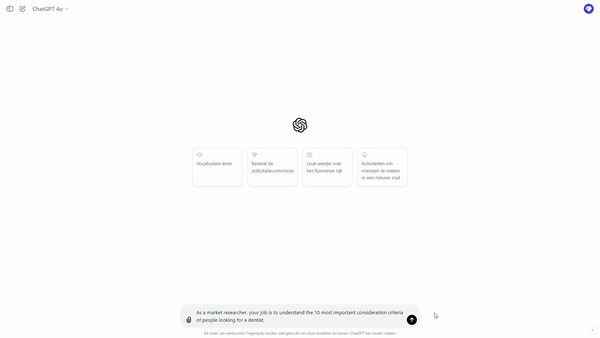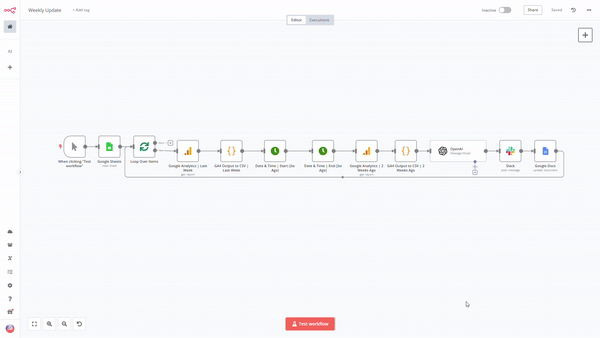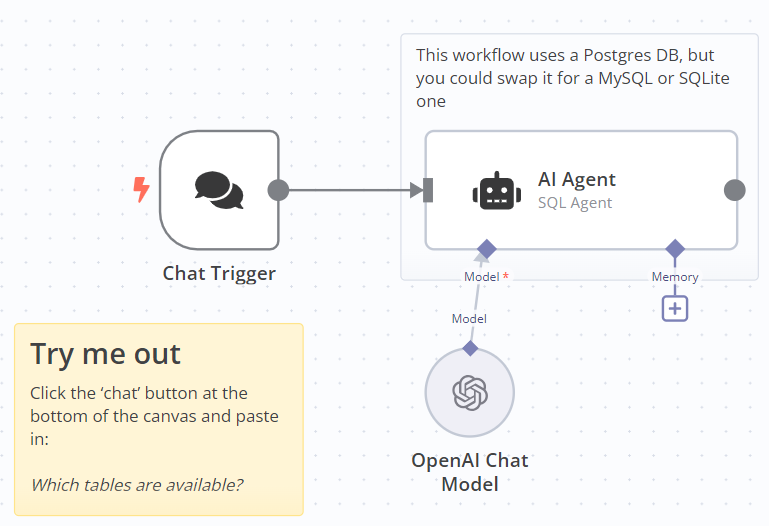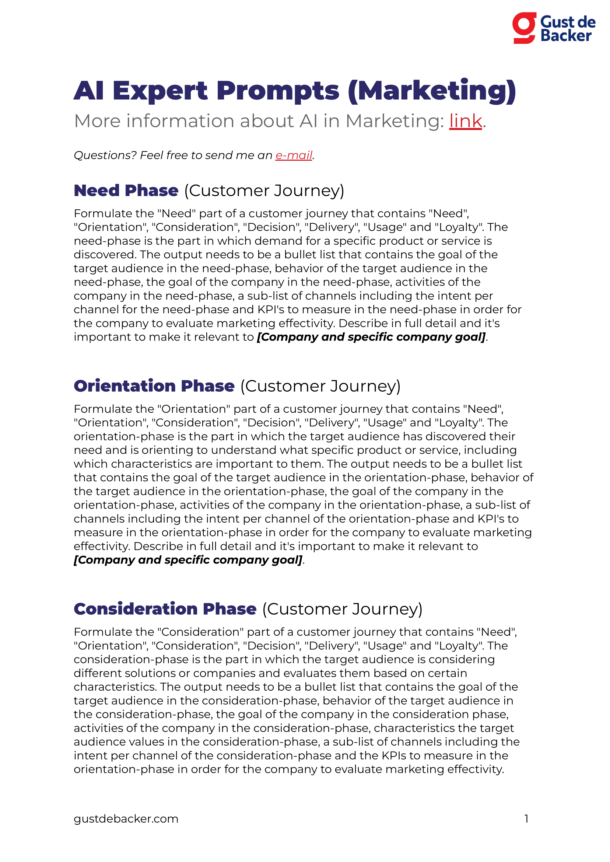Did you know that marketing teams waste an average of 33% of their time on repetitive tasks?
This leaves less time for strategy and creativity.
Meanwhile, your competitors are increasing their efficiency with AI.
The rapid developments make you feel like you’re on a highway, with your eyes closed.
In this article, you’ll learn:
- How your marketing team becomes ~30% more efficient
- Why AI makes your work more fun
- Which 4 AI applications are indispensable
- Claim your time back to actually make an impact.
Wondering how? Discover the 5 proven steps.
What is AI and why is it indispensable?
BCG and Harvard found that colleagues who use ChatGPT:
- 12.2% complete more tasks
- Require 25.1% less time
- Work with +40.0% higher quality
There are different types of AI:

Especially relevant to your marketing team is “Machine Creation,” also known as “Generative AI.
Generative AI refers to artificial intelligence designed to generate content similar to or better than human production.
The 2024 AI Marketing Benchmark indicates that 53.8% of marketers have already adopted AI.
Don’t worry…
You won’t lose your job, but your job description will change.
Can’t wait for the 7 expert prompts? Download them immediately:
What forms of Generative AI can you use to help your marketing team work more efficiently?
Read on quickly.
Large Language Models (LLMs)
You can think of a Large Language Model (LLM) such as ChatGPT, Microsoft Copilot and Google Bard as a smart assistant.
An LLM is trained on all the available online data out there. Think of it as a:
- Librarian who has read every book.
- Scientist who knows every study.
- Interpreter who speaks every language.
- Mathematician who understands all the formulas.
- Time traveler who knows all historical events.
The most famous LLM is ChatGPT, which allows you to send prompts in conversational form:
“As a market researcher, your job is to understand the 10 most important consideration criteria of people looking for a dentist.”
ChatGPT in this case will give you a neat response to which you can respond so that a conversation ensues:

How do you make sure you don’t have to reinvent the wheel every time with your prompts?
I’m going to explain that to you.
CustomGPTs
You can think of a CustomGPT as a Swiss army knife, with different tools for specific tasks.
You create the prompt for your task once, and then you can reuse it constantly.
Imagine, every week you need to give an update to management on last week’s results:
Create a CustomGPT and configure it with your prompt. For example:
- “As marketing manager, your job is to send the direct weekly update with last week’s results and upcoming work. You get to forward the results and standouts in bullet points and turn this into an easy-to-read email. Here’s an example: [paste example].”
Now all you have to do each week is quickly share your findings with this CustomGPT and you’ll get a ready-to-read email right back:

There is one big advantage: in fact, you can also use GPTs created by others. For example:
- Data Analyst:upload a file and let ChatGPT do advanced analysis.
- Market Researcher:do extensive market research with a GPT trained to do so.
- Humanize AI: have your AI generated texts converted into a human writing style.
Do you really want to work more efficiently?
Read on quickly.
AI Workflows
Just as a chef follows his recipe to prepare a meal, the AI Workflow follows a series of steps to complete a task.
This is considerably more complex, but this is where the gold lies for your marketing team.
Using the previous example; you need to send an update to management every week on last week’s results.
Let your AI Workflow automatically retrieve, analyze and visualize all this data to draw conclusions from it to base recommendations on:

If you have enough confidence in your workflow, you can have your own email sent automatically.
What are the first tasks you would like to automate with an AI Workflow? For example:
- Mails: automatically draft replies for incoming emails.
- Sales: automatically qualify prospects based on extensive research.
- Products: automatically have product descriptions added to new products.
- Social Media: automatically convert your blog articles to published posts on all your social media channels.
- Competition: automatically crawl your competitors’ websites to monitor changes.
How to make sure you don’t have to set up all these steps yourself?
I’m going to explain that to you.
AI Agents
You can think of an AI Agent as the autopilot on an airplane, they take over routine tasks so you can focus on important things.
One of the most recent but promising areas within AI.
Imagine, during a brainstorm, your marketing team wants to answer the question:
“On average, how much time is there between the first website visit and the actual purchase?”
Then you’ll get an answer to your question within seconds.
Want to know how?
Pair an AI Agent with your database with all your data, and it independently conducts conversations with your database while continuously improving itself until your task is complete:

This looks underwater as follows:
- Step 1: Identify relevant tables and columns.
- Step 2: Understand the structure of the relevant tables.
- Step 3: Retrieve initial website visits.
- Step 4: Retrieve purchases.
- Step 5: Combine first website visits with purchases based on user ID.
- Step 6: Calculate the average time between first website visit and purchase based on user ID.
- Step 7: Convert the time to a readable format.
In an AI Workflow, this could just be 7 separate steps you need to set up.
Ready for the 5 steps to automation?
Read on quickly.
5 steps to automation
Want to automate repetitive tasks within your marketing team by up to 30%?
Claim your time back and focus your team on things that will make lasting impact.
Having helped several marketing teams effectively apply AI, I’ve developed a comprehensive roadmap that I go through as standard to maximize impact with AI in both the short and long term.
Broadly speaking, it boils down to:
- Identify
Collect as much relevant data and insights as possible to determine which tasks recur frequently so you can automate in these for efficiency over quality.
- Calculate
Using a business case or ROI calculation, make sense of what it would mean for your business or marketing team if these tasks could be automated.
- Plan
Create a roadmap where you map out when you want to get started with which initiatives, set deadlines and determine responsibilities.
- Implement
Make sure you have someone with knowledge or experience in AI so you can get initiatives off the ground quickly and effectively.
- Optimize
After your tasks are automated, you want to ensure quality and adoption, because not everyone is eager to have his/her work automated ;-).
Curious about what AI can do for your business or marketing team?
Schedule a consultation and discover the possibilities without obligation:
- Training / Workshop: let your team discover hands-on the possibilities of AI in order to apply it directly in their work.
- Audit: provide insight into where the most impactful AI battles can be made for your company.
- Implementation: using CustomGPTs, AI Workflows and AI Agents to develop and ensure the most impactful use cases.
Getting started with AI today?
Try the 7 expert prompts right away:
Start Today
Ready to make your marketing team more efficient?
Give your team more room for strategy and creativity by following these steps:
- Download the 7 expert prompts: easily discover how to deploy AI.
- Schedule a consultation: identify your team’s needs.
- Start with a pilot: cash in on quick wins through simple AI implementations.
Future-proofing your marketing team starts today.
Questions? Contact [email protected].
Frequently asked questions about AI
AI can help marketing teams automate repetitive tasks, leaving more time for strategic thinking and creative work. This allows teams to work more efficiently, get results faster and deliver higher quality.
According to the 2024 AI Marketing Benchmark, AI can make marketing teams work up to 30% more efficiently. This means that a significant portion of repetitive tasks can be automated, freeing up a lot of time for other important activities.
The most important AI tools for marketing tasks are Generative AI such as ChatGPT, CustomGPTs for specific tasks, AI Workflows for complex processes, and AI Agents for automating routine tasks. These tools can help create content, analyze data, automate emails, and more.
Implementing AI can start easily with small steps, such as using off-the-shelf prompts and CustomGPTs. For more complex AI solutions, such as AI Workflows and AI Agents, it may be helpful to engage a specialist or consultant to ensure smooth integration.
AI is meant to automate repetitive and time-consuming tasks, not make jobs obsolete. The goal is to relieve marketing professionals of routine tasks so they can focus on strategic and creative work that adds value to the organization.
Start by identifying repetitive tasks that can be automated. Download the 7 expert prompts to see immediately how to deploy AI. Schedule a consulting session or workshop to further explore opportunities and create an action plan for implementing AI tools.
1. Download the 7 expert prompts to get instant access to practical AI solutions.
2. Schedule an audit or consulting session to determine where AI can have the most impact on your team.
3. Start with simple applications like CustomGPTs and gradually expand to more complex AI Workflows and AI Agents.
Yes, AI tools such as CustomGPTs can be configured specifically for the tasks and processes within your team. This allows you to tailor AI solutions to perfectly fit the unique needs of your marketing team.
The cost of AI tools can vary depending on the complexity and type of tool you choose. Many basic AI tools and prompts are free or affordable, while more advanced solutions may require an investment. It is important to consider the ROI of these tools when implementing them.
Start with trainings and workshops to familiarize your team with the benefits and applications of AI. Engage your team in the implementation by soliciting their feedback and showing them how AI can improve their work. Provide ongoing support and optimization after initial implementation to ensure adoption.


![Business-Driven Marketing (BDM): 8 Steps to Drive Business Impact [+14 Templates]](https://gustdebacker.com/wp-content/uploads/2024/07/Business-Driven-Marketing-BDM.png)
![Customer Journey Map (2025): How-to & Examples [+ Template]](https://gustdebacker.com/wp-content/uploads/2023/11/Customer-Journey-Map.png)
![Cognitive Biases (2025): Complete List of 151 Biases [Psychology]](https://gustdebacker.com/wp-content/uploads/2023/11/151-Cognitive-Biases.png)
0 Comments